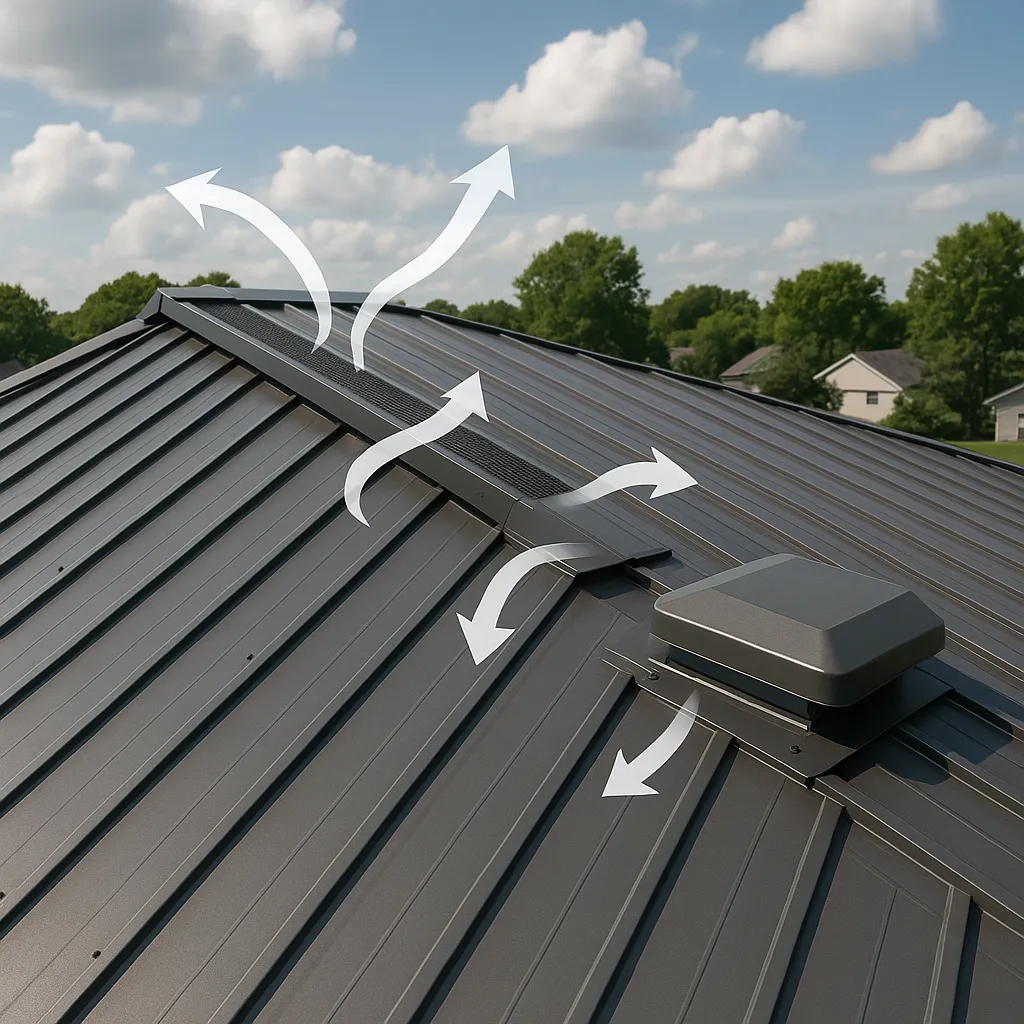
Roof Vents for Metal Roof: Best Ventilation Options
“Ventilation isn't optional — it's essential. Especially when it comes to metal roofing.”
Metal roofs are known for their strength, longevity, and sleek aesthetics — but without proper ventilation, even the best metal roofs can suffer. In this blog, we’ll explore why roof vents are critical for metal roofing systems and which vent types are best suited for them.
🔍 Why Ventilation Matters for Metal Roofs
Metal roofing can trap heat and moisture underneath if not ventilated properly. Without airflow:
Condensation builds up inside the attic
Mold and rot can damage roof decking and insulation
Your building may experience higher energy bills
The roof’s lifespan may be significantly reduced
A balanced ventilation system helps to:
✅ Regulate temperature
✅ Prevent moisture damage
✅ Improve energy efficiency
✅ Extend roof life
🌬️ Best Roof Vent Options for Metal Roofs
When it comes to venting a metal roof, here are four top vent types that perform well:
1. 🏔️ Ridge Vent
Installed along the roof’s peak, ridge vents allow warm, moist air to escape naturally from the attic.
Pros:
Seamless integration with metal roofing
Provides continuous exhaust
No moving parts = low maintenance
Best for: Long ridge lines, homes in hot or humid climates

2. 📏 Batten Vent
Batten vents are installed beneath metal roof panels along batten strips, promoting airflow under the roofing system.
Pros:
Ideal for tile or metal panel roofs
Helps prevent condensation between panels
Supports insulation performance
Best for: Sloped metal roofs with raised battens or tile-style panels

3. 🔨 Fascia Vent
Fascia vents are placed at the eaves (along the fascia board), pulling in fresh outside air.
Pros:
Excellent intake ventilation
Discreet appearance
Enhances ridge vent performance
Best for: Homes where soffit vents aren’t possible

4. 🌀 Baffle Vent
Installed between rafters, baffle vents prevent insulation from blocking airflow from soffit vents.
Pros:
Maintains a clear airflow path
Works well with blown-in insulation
Supports attic ventilation efficiency
Best for: Attic spaces with thick or dense insulation

🧱 Metal Roof + Vent = Balanced System
A properly designed metal roof ventilation system includes:
Intake vents (e.g., fascia or soffit vents)
Exhaust vents (e.g., ridge or gable vents)
Unobstructed air paths (e.g., baffle vents)
💡 Pro Tip: Always match the intake and exhaust airflow for best performance.
💸 Long-Term Benefits
Investing in the right vents for your metal roof helps you:
Avoid structural damage
Improve indoor comfort
Reduce HVAC load
Maintain product warranties
Increase home resale value
✅ Conclusion
Metal roofing systems are built to last — but only when paired with a well-planned ventilation strategy. Ridge vents, batten vents, fascia vents, and baffles all play unique roles in protecting your structure and improving air circulation.
If you're planning a new metal roof or upgrading an old one, make sure ventilation is part of the plan.